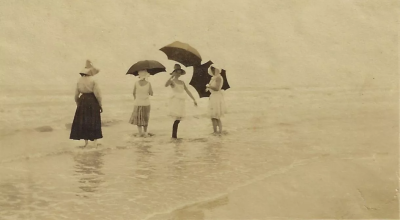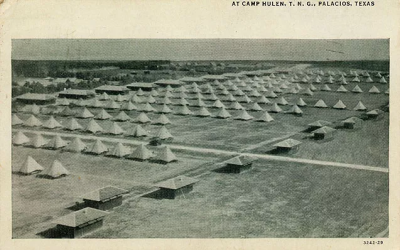
Palacios is located in Matagorda County, along the Tres Palacios Bay, an inland bay of Matagorda Bay, on the central coast of Texas. Houston is approximately 110 miles to the northeast and Corpus Christi is approximately 110 miles to the southwest.

There was a legend that a Spanish ship sailing into the Gulf was carried into Matagorda Bay and wrecked. The sailors thought they saw palaces on the shoreline in the distance and so swam toward the shore. As they neared the shore, the mirage of the “palaces” disappeared. The bay and creek were actually named Tres-Palacios after Jose Felix Trespalacios, Spanish governor during the years 1822 and 1823.
The population grew quickly. In 1904 construction of a “Pleasure Pavilion” was started on the central waterfront. It featured a two-story open-air central structure with two large wings on either side and offered entertainment ranging from dancing and skating to basketball games. Numerous buildings went up around this time. The City of Palacios was incorporated in 1909 with Ruthven Duncan as the first Mayor and the Chamber of Commerce was founded in 1910. Palacios continued to grow throughout the 1910s and 1920s.

Camp Hulen (originally Camp Palacios) was founded in 1925-26 as a summer training camp for the 36th Infantry of the Texas National Guard. It was leased to the U.S. War Department in 1940 and became a training facility for anti-aircraft artillery, housing nearly 15,000 personnel at its peak, as well as a number of German war prisoners. With its large military population, Palacios played host to visiting stars such as Rita Hayworth and Artie Shaw.
After World War II, Camp Hulen was closed and the population of Palacios declined. Hurricane Carla hit in 1961, causing severe damage to the town and destroying many historic structures. Since that time, Palacios has begun to grow again, with the formation of a vibrant Vietnamese immigrant community in the 1970s and 80s, as well as people from all over America discovering the beauty and tranquility of this special place. The Pavilion was renovated in 1988, symbolizing the connection with the past and a bright outlook for the future.

In the mid-’90s, a boat from La Salle’s fleet, Rene-Robert Cavelier’s ship, LaBelle, was discovered sunk in the Matagorda Bay. It is arguably the most important shipwreck in the Western world, for three reasons:
- It was La Salle, a famous explorer
- It is very old, sinking in 1686, and
- It sank in such murk and mire that things that are not normally preserved were, like rope and wood and leather, and other artifacts.
Palacios was the headquarters for the excavation. The City by the Sea Museum is proud to feature several exhibits from the historical event. A 30 ft. replica of the vessel, La Petite La Belle, can be found in the harbor of Palacios as a tourist attraction.
